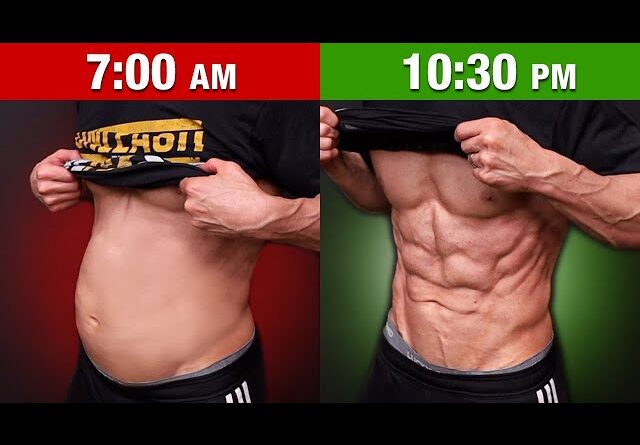How to Get Six-Pack Abs: A Comprehensive Guide
Attaining a six-pack isn’t just about aesthetics; it’s about improving overall fitness, strength, and health. While the pursuit of a well-defined core is a common goal, achieving it requires more than just endless crunches. Here’s a comprehensive guide to help you build those coveted six-pack abs and maintain them.
- Understand the Basics
Abs are Made in the Kitchen: Despite the popular adage, “abs are made in the kitchen,” it’s true. Your diet plays a crucial role in reducing body fat, which is essential for revealing abdominal muscles. Regular exercise is also key, but without proper nutrition, you may not see the results you want.
Body Fat Matters: Visible abs are largely a function of low body fat percentage. Even if you have well-developed abdominal muscles, they won’t show if they are covered by a layer of fat.
- Adopt a Healthy Diet
Create a Caloric Deficit: To lose fat, you need to consume fewer calories than you burn. Use a calorie calculator to estimate your daily needs and aim for a moderate deficit.
Focus on Nutrient-Dense Foods:
- Lean Proteins: Chicken breast, fish, tofu, and legumes help build muscle and keep you full.
- Healthy Fats: Avocados, nuts, seeds, and olive oil support overall health and satiety.
- Complex Carbohydrates: Opt for whole grains, vegetables, and fruits for sustained energy.
- Hydration: Drink plenty of water to aid digestion and metabolism. Aim for at least 8 glasses a day.
Limit Sugars and Processed Foods: Avoid sugary snacks, sodas, and highly processed foods, which can contribute to fat gain and hinder progress.
- Incorporate Cardiovascular Exercise
Engage in Regular Cardio: Aim for at least 150 minutes of moderate-intensity cardio or 75 minutes of high-intensity cardio per week. Activities such as running, cycling, swimming, and brisk walking are excellent options.
Vary Your Workouts: Mixing different forms of cardio can prevent boredom and challenge your body in new ways, enhancing fat loss.
High-Intensity Interval Training (HIIT): Consider incorporating HIIT, which alternates between short bursts of intense activity and rest periods. HIIT has been shown to effectively burn fat and improve cardiovascular fitness.
- Focus on Strength Training
Full-Body Workouts: Strength training is crucial for building muscle and boosting metabolism. Incorporate exercises that work multiple muscle groups, such as squats, deadlifts, and bench presses.
Core-Specific Exercises:
- Planks: A great exercise for overall core stability. Aim for variations such as side planks to target different areas.
- Crunches: Effective for engaging the upper abs. Perform variations like bicycle crunches to work both the upper and lower abs.
- Leg Raises: Focus on the lower abs. Perform lying or hanging leg raises for added intensity.
- Russian Twists: Engage the obliques (side abs) by twisting from side to side.
- Prioritize Recovery and Rest
Get Adequate Sleep: Aim for 7-9 hours of quality sleep per night. Sleep is essential for muscle recovery, fat loss, and overall health.
Allow for Recovery: Rest days are important to prevent overtraining and injury. Incorporate at least one or two rest days into your weekly routine, and listen to your body’s signals.
Manage Stress: High stress can lead to increased fat storage, particularly around the abdominal area. Practice stress management techniques such as meditation, yoga, or deep breathing exercises.
- Stay Consistent and Patient
Set Realistic Goals: Achieving a six-pack requires time and dedication. Set achievable goals and focus on making gradual, sustainable changes to your lifestyle.
Track Your Progress: Monitor your body fat percentage, strength gains, and overall fitness levels. Celebrate your progress and adjust your plan as needed.
Stay Motivated: Surround yourself with supportive people, track your achievements, and remember why you started. Consistency and patience are key.
Conclusion
Achieving six-pack abs is a challenging but attainable goal with the right approach. Focus on a balanced diet, regular exercise, proper recovery, and a commitment to long-term health. By integrating these strategies into your lifestyle, you can work towards not only a defined core but also improved overall fitness and well-being. Stay dedicated, be patient, and enjoy the journey to a healthier, stronger you!
